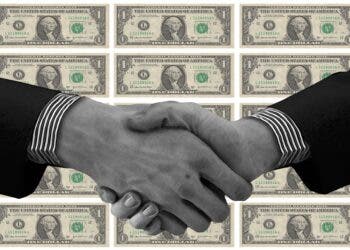
Since the Great Depression, the stock market has had one of its longest bull runs in history with the S&P 500 index yielding over 550% in returns. Then came massive cryptocurrency mania which swelled Bitcoin to even greater heights. Last year, retail investors were in the spotlight, making headlines as they resurrected short-sold, dying companies like GameStop and AMC, the so-called meme stocks. But with every incredulous spike in stocks and Bitcoin, pundits weren’t too far behind crying we’re in a bubble that will imminently collapse.
These kinds of prophecies have yet to bear fruit, but the absence of evidence is not evidence of absence. In other words, we might very well be in a bubble but is there any objective way to tell? An international team of researchers now claims they have laid down the mathematical groundwork to characterize the most fragile metrics of financial markets. In turn, this could allow analysts to identify real vulnerabilities and systemic risks.
“Traditional economic theories cannot foresee events like the US subprime mortgage collapse of 2007,” said study author Areejit Samal, a professor of computational biology at The Institute of Mathematical Sciences in Chennai, India.
Samal and colleagues analyzed stock market networks for the USA’s S&P500 and Japan’s Nikkei-225 indices over a 32-year period, from 1985 to 2016. Their analysis sheds new light on the higher-order architecture of financial systems, revealing certain discrete curvatures are reliable indicators of market instability. That’s something all investors are definitely worried about, whether they play it safe buying exchange-traded funds for indexes or engaging in high-risk, high-reward CFD trading or spread betting.
Previously, a team at the Max Planck Institute for Mathematics in the Sciences led by Jürgen Jost developed four discrete curvatures to study changes in the structure of stock market networks over time. One such curvature is the Forman-Ricci curvature (FRE), which the new study showed to have a high correlation with traditional financial indicators.
According to Samal, the FRE perfectly captures market fear, reflected by the volatility in stock prices, and market fragility, which refers to relative risk.
The analysis of the American and Japanese stock markets over the study period showed that during normal trading periods, the market is very fragmented, meaning individual stocks are not all that much correlated with one another. However, during times of bubbles and potential market crashes, correlations between stocks are more uniform and interconnected.
FRE has a number of advantages over traditional indicators. The curve is sensitive to both sector-driven and global market fluctuations. It is also better suited for capturing the interdependencies within and between market sectors that may increase the risk of market crashes.
“There are no easy definitions of a market crash or bubble and merely monitoring established market indices or log-returns does not suffice, but our methodology offers a powerful tool for continuously scanning market risk and thus the health of the financial system,” Jost said in a statement.
The findings were reported in the journal Royal Society Open Science.






